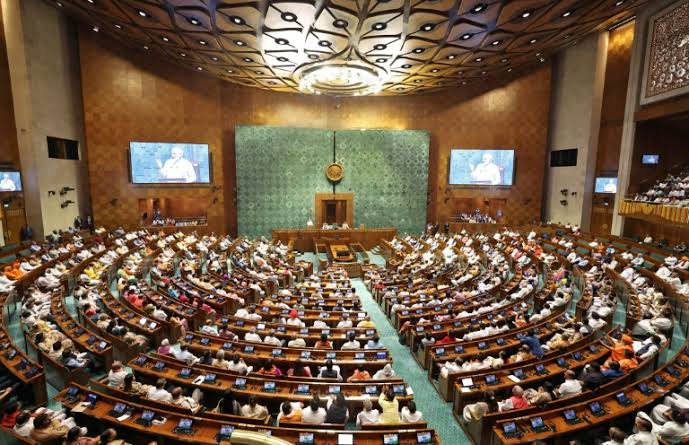‘5.5 lakh handsets blocked, 20,000 bulk SMS senders deactivated, 24 lakh WhatsApp accounts disengaged’
Sajid Raina
New Delhi, Jul 30 :
Union Minister of Communications, Jyotiraditya M Scindia on Wednesday said that the government has disconnected over 13.6 Million mobile numbers to curb the telecom fraud.
Scinidia while responding to the questions of the Members of Parliament, according to the news agency—Kashmir News Observer (KNO), informed the Lok Sabha that the government has addressed key concerns related to telecom frauds.
Outlining the government’s ongoing efforts to enhance prevention of cyber frauds, the Union Minister informed the House in a major nationwide push to curb cyber fraud and protect citizens from digital threats, the Government of India has rolled out a series of decisive, tech-enabled measures under the Department of Telecommunications (DoT), in close coordination with the Ministry of Home Affairs. “As part of this initiative, a Digital Intelligence Platform has been developed, bringing together 620 institutions including 570 banks, 36 state police forces, investigative agencies, and telecom service providers, to jointly tackle fraud in real-time. The platform enables integrated action against scammers and cyber criminals who misuse telecom infrastructure to deceive citizens,” he said.
The Minister said that to further involve the public in this mission, the Government launched the Sanchar Saathi portal on May 16, 2023, which has since registered over 15.5 crore hits, indicating strong public awareness and participation. “Building on this success, the Sanchar Saathi mobile app was launched on January 17, 2025, for both Android and iOS, and has received over 44 lakh downloads,” he said, adding, “Through the combined inputs of these platforms, DoT has blocked 5.5 lakh handsets, and deactivated 20,000 bulk SMS senders. Nearly 24 lakh WhatsApp accounts involved in suspicious activities have also been disengaged.”
“A key feature introduced is the Know Your Mobile Connections service, which allows users to check all numbers issued under their name and report any unauthorized connections. This has resulted in the disconnection of 1.36 crore such numbers.
“The Government has also deployed artificial intelligence tools, notably the ASTR system, to automatically detect and eliminate fake mobile numbers—leading to the disconnection of an additional 82 lakh such connections addressing the serious issue of international spoof calls, where foreign numbers appear as Indian calls, the DoT introduced a centralized software solution under the International Incoming Spoof Calls Prevention. On the very first day, 1.35 crore such spoof calls were blocked, and ongoing efforts have brought down such incidents by 97 percent. Today, only about three lakh spoof calls are being detected daily, compared to the earlier massive volumes. Telecom operators have also been mandated to display “International Call” alerts on all such incoming numbers for greater user transparency,” he said.
The Minister said, “In a significant technological leap, the Fraud Risk Indicator (FRI) system was introduced to assess user risk levels—Very High, High, or Medium—based on banking and transaction behaviour. This risk data is shared with banks in real time, helping them prevent suspicious transactions. Over 3.7 lakh individuals have been flagged under these categories, leading to the prevention of more than 3.04 lakh debit/credit instructions and the freezing of 1.55 lakh bank accounts. Recognizing the system’s effectiveness, the Reserve Bank of India has instructed all banks to integrate FRI into their internal systems.”
“Additionally, the DoT has taken firm steps against misuse of Indian SIMs operating from Southeast Asian countries. Over 26 lakh such roaming mobile connections have been disconnected, and around 1.3 lakh devices used in such scams have been blocked. These ongoing efforts signal the Government’s strong commitment to protecting citizens, securing telecom networks, and building a digitally secure India. Citizens are encouraged to remain vigilant and make full use of tools like the Sanchar Saathi portal and app to report suspicious activities, check their mobile connections, and help build a fraud-free digital ecosystem,” the Minister said.
BSNL SUBSCRIBER BASE HAS RISEN
Regarding the performance of public sector telecom undertakings, the Minister noted that BSNL has seen a rise in its subscriber base, increasing from 8.55 crore to 9.1 crore over the past fiscal year. This recovery is supported by a ₹3.22 lakh crore revival package sanctioned over the last three years. To ensure accountability and results, each of BSNL’s 32 telecom circles is now developing its own business plan under a decentralised strategy. The Ministry has also conducted a 12-hour Strategy and Business Development Session 2025-26 with all Chief General Managers, a first in the sector’s history.
The Union Minister also highlighted India’s successful development of an indigenous 4G technology stack. The core software for this system has been developed by C-DoT, a public sector organisation, while the radio access network hardware is being manufactured by Tejas Networks. System integration is being handled by TCS. Out of 95,000 towers sanctioned for rollout, 75,000 are already operational, with ₹20,000 crore in capital expenditure already invested. BSNL’s 4G services are now live and being optimized, with a transition to 5G planned in the coming phase—(KNO)

